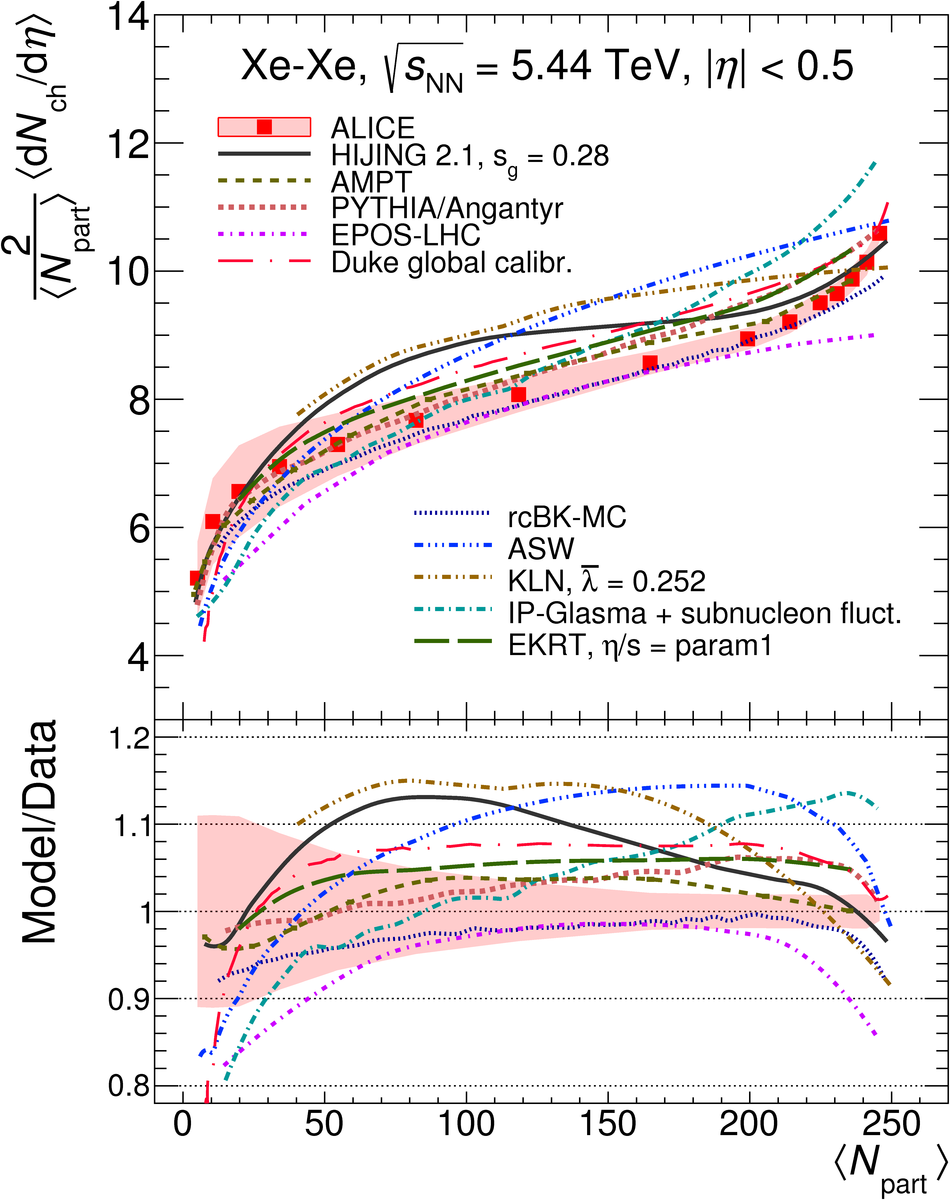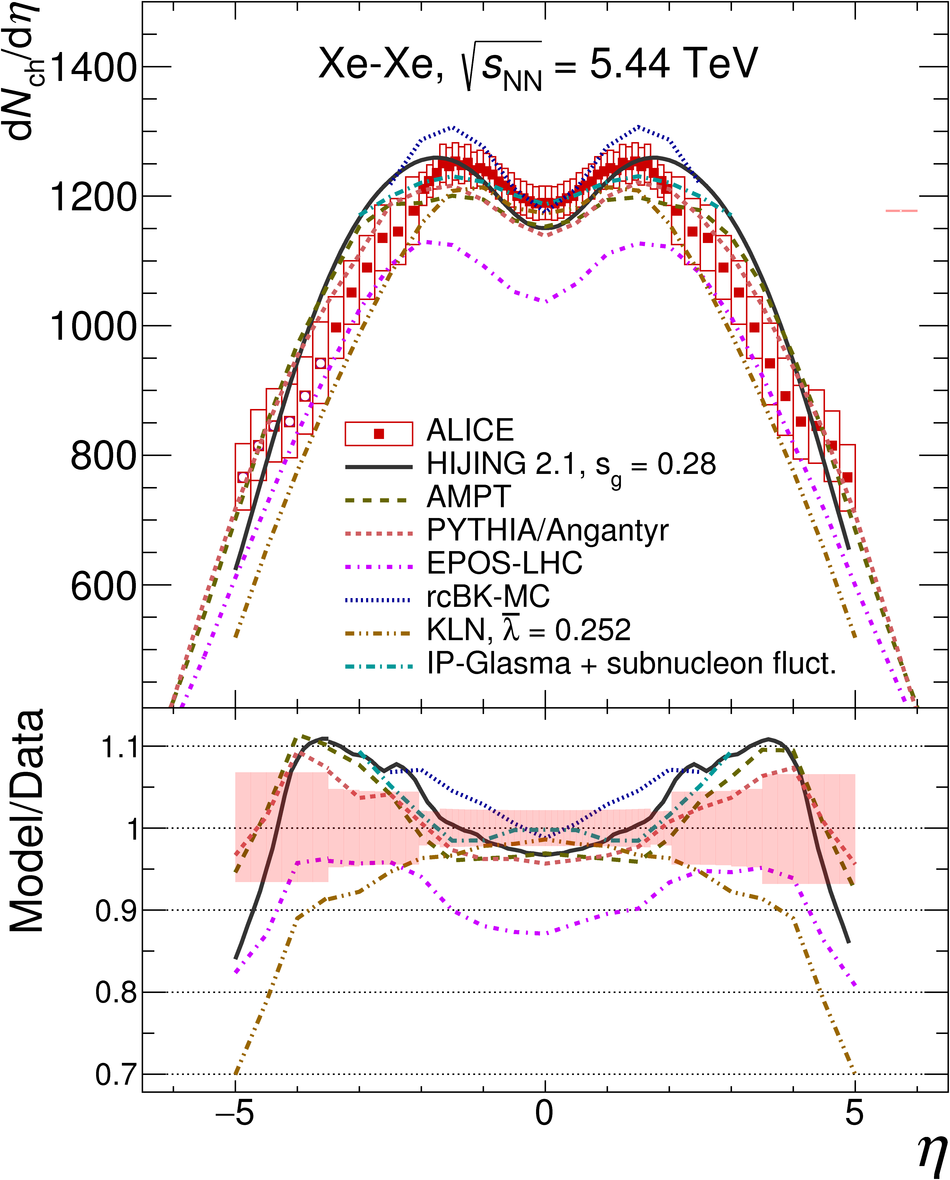In this Letter, the ALICE Collaboration presents the first measurements of the charged-particle multiplicity density, $\rm{d}N_{\rm{ch}}/\rm{d}\eta$, and total charged-particle multiplicity, $N_{\rm{ch}}^{\rm{tot}}$, in Xe-Xe collisions at a centre-of-mass energy per nucleon--nucleon pair of $\sqrt{s_{\rm NN}}$ = 5.44 TeV. The measurements are performed as a function of collision centrality over a wide pseudorapidity range of $-3.5 <~ \eta <~ 5$. The values of $\rm{d}N_{\rm{ch}}/\rm{d}\eta$ at mid-rapidity and $N_{\rm{ch}}^{\rm{tot}}$ for central collisions, normalised to the number of nucleons participating in the collision ($N_{\rm{part}}$) as a function of $\sqrt{s_{\rm NN}}$, follow the trends established in previous heavy-ion measurements. The same quantities are also found to increase as a function of $N_{\rm{part}}$, and up to the 5% most central collisions the trends are the same as the ones observed in Pb-Pb at a similar energy. For more central collisions, the Xe-Xe scaled multiplicities exceed those in Pb-Pb for a similar $N_{\rm{part}}$. The results are compared to phenomenological models and theoretical calculations based on different mechanisms for particle production in nuclear collisions. All considered models describe the data reasonably well within 15%.
Phys. Lett. B 790 (2019) 35-48
HEP Data
e-Print: arXiv:1805.04432 | PDF | inSPIRE
CERN-EP-2018-120







